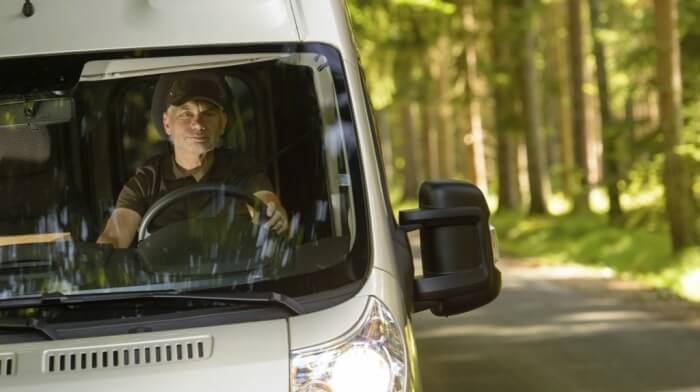Insuring you company vehicles is a pain, but doing it properly could save your business a tidy sum. To get the lowest premiums you must prepare. Read on to find out how.
Top Tips For Insuring Your Vehicles
Insuring you company vehicles is a pain, but doing it properly could save your business a tidy sum. To get the lowest premiums you must prepare. Read on to find out how.

If you’re a business that relies on company vehicles, be that conventional cars or commercial vehicles, getting the right insurance is crucial. The wrong policy will cost your business money.
So, how do you secure the most appropriate insurance for your business vehicles? What’s the best way to keep your cars or vans safe? How can you save money?
Fleet insurance?
‘Fleet’ might seem a scary and potentially ‘expensive’ word, but if your business operates three or more vehicles then it’s eligible to be covered on a fleet insurance policy. This is often the most cost and time effective way to insure numerous vehicles and drivers.
The main point to consider is with a fleet policy, you do not receive a conventional ‘no claims bonus’ (NCB). Instead, the company receives a confirmed fleet claims experience statement at the end of each policy.
Do you need that extra vehicle or driver?
The cost of commercial vehicle or fleet insurance can depend on various factors, some you can influence; some you cannot. The main areas that will affect the cost of your policy are likely to be:
- Nature of the business you run
- Number of drivers you need to insure
- Driving history of each individual
- How many vehicles you need to operate
- Where your business is based
And while you’re unlikely to want to change the nature or location of your business, it’s worth seriously considering the cost implications of taking on that extra driver or additional vehicle
Cost savings with technology
GPS car tracking – previously expensive and tricky to implement, now fitting a tracker offers multiple benefits. With a tracker, your vehicle can be located quickly following theft, thereby reducing your insurance premiums. In addition, if your vehicle is returned efficiently, there’s minimal interruption for your business.
Vehicle cameras – installing in-vehicle cameras can be a very cost effective way to reduce the number and size of claims.
Consider the “How’s my driving?” scheme
Implementing new technology might seem too intrusive, costly, time consuming or potentially all three. As such, it might be worth considering the “How’s My Driving?” scheme. Aimed at reducing the amount of incidents, as well as educating drivers, the scheme provides a simple and cost effective fleet monitoring solution for SMEs.
Check your employees are the right kind of drivers
Whether you provide company cars to your employees or your business uses commercial vehicles, consider who’s driving, very carefully. It might seem obvious, but young drivers pay higher premiums, as they are far more likely to be involved in accidents.
In general, stick to the following:
- Drivers should be over 25
- Claim and conviction free
- Only covered business use
- Reducing accident frequence
Some accidents are unavoidable but there are ways to reduce the risk of them happening:
Check the driver’s licence: details of the licence can be viewed on the DVLA’s website
Incident history: you should also get in touch with the driver’s former insurer(s) to check for incidents they might have been involved in across all commercial and personal policies
Driver awareness training: it is important to send your drivers on training days regularly so they are aware of the dangers of driving and general safety on the roads
And don’t forget
In the event of an accident, ensure potential claims are reported immediately - regardless of how minor they appear - the greater the delay, the more the potential cost.
Your vehicle and key security – this might seem obvious but park your vehicle off the street / in a drive or garage overnight and keep your keys out of sight.
Set an appropriate excess level - your excess is the amount you have to pay to make a claim against your own insurance policy.
The higher your excess the lower the premium you should pay at the outset of a policy.
Select the appropriate cover - deciding whether to go fully comprehensive, third party (fire and theft) or third party only can be a tricky decision. If your vehicles are worth over £5,000 the industry advice is to go fully comprehensive.
Shop around but don’t assume aggregators will be cheaper - despite their larger marketing budgets, aggregators aren’t always the answer. The chances are that specialist insurance brokers will deal with as many if not more leading commercial motor insurers.
Haggle - insurance is a very competitive market place and insurers want your business.
Introductory discounts – if you’re a company vehicle driver with a claim free record, but don’t possess any no claims bonus in your own name, you might be able to secure an introductory discount. This usually involves providing a letter from a previous or existing employer, to confirm your claim free driving.
Don’t exaggerate...too much. Insurers know you’ll be looking for the most competitive premium for your business. Feel free to suggest a price, but don’t be unrealistic.
Thanks for signing up to Minutehack alerts.
Brilliant editorials heading your way soon.
Okay, Thanks!



